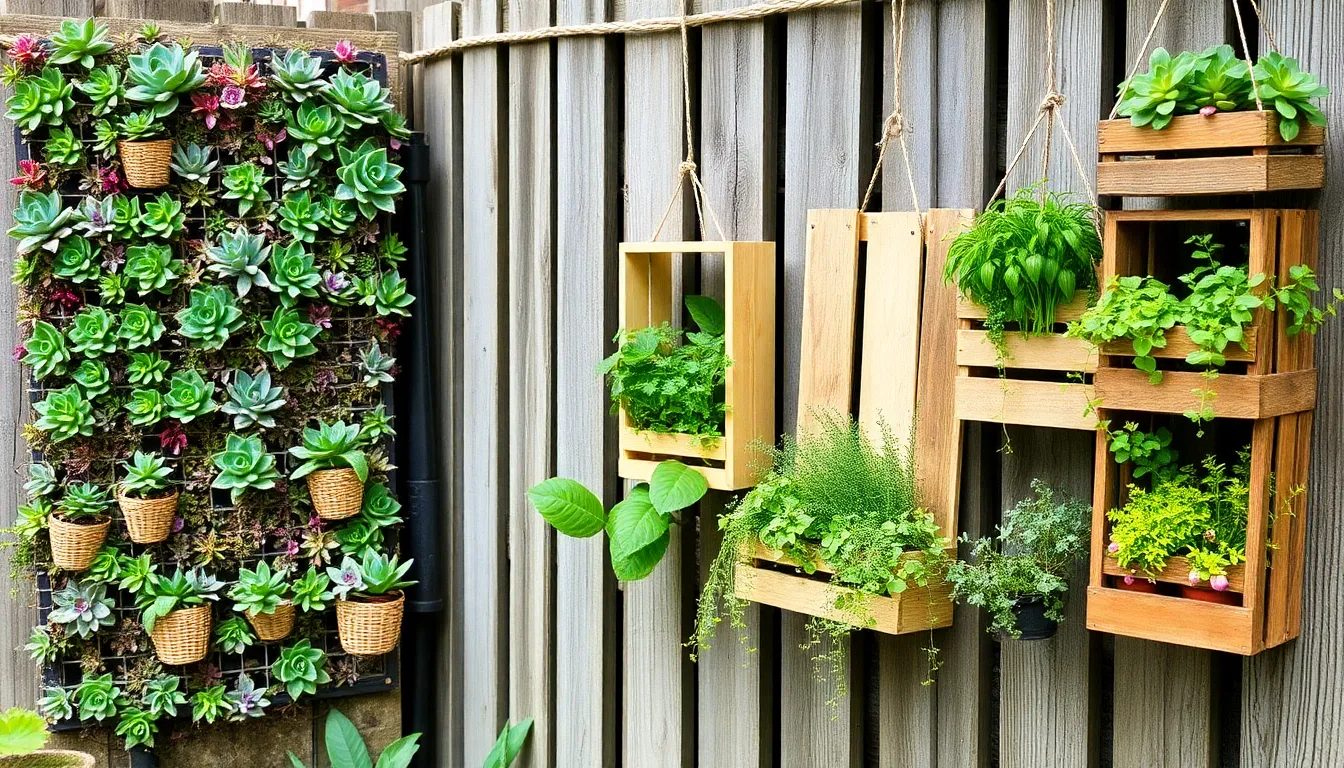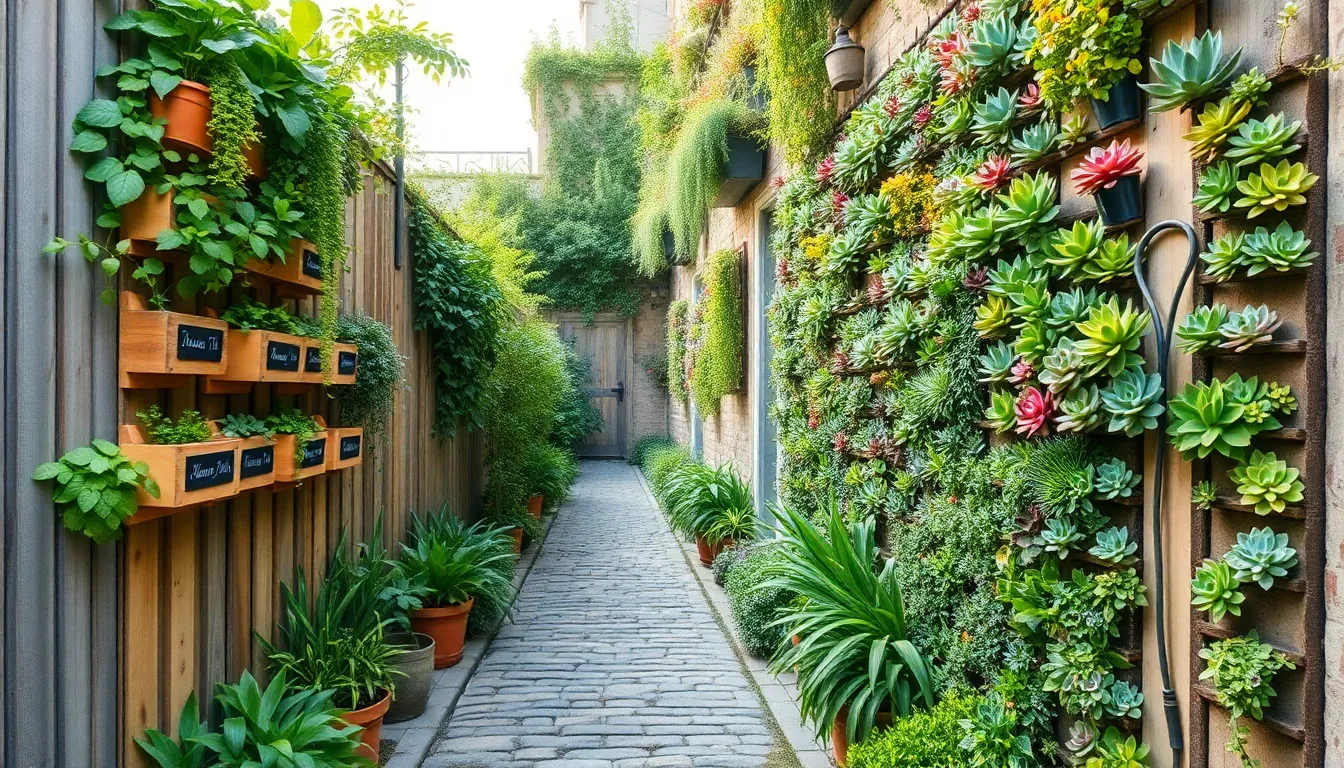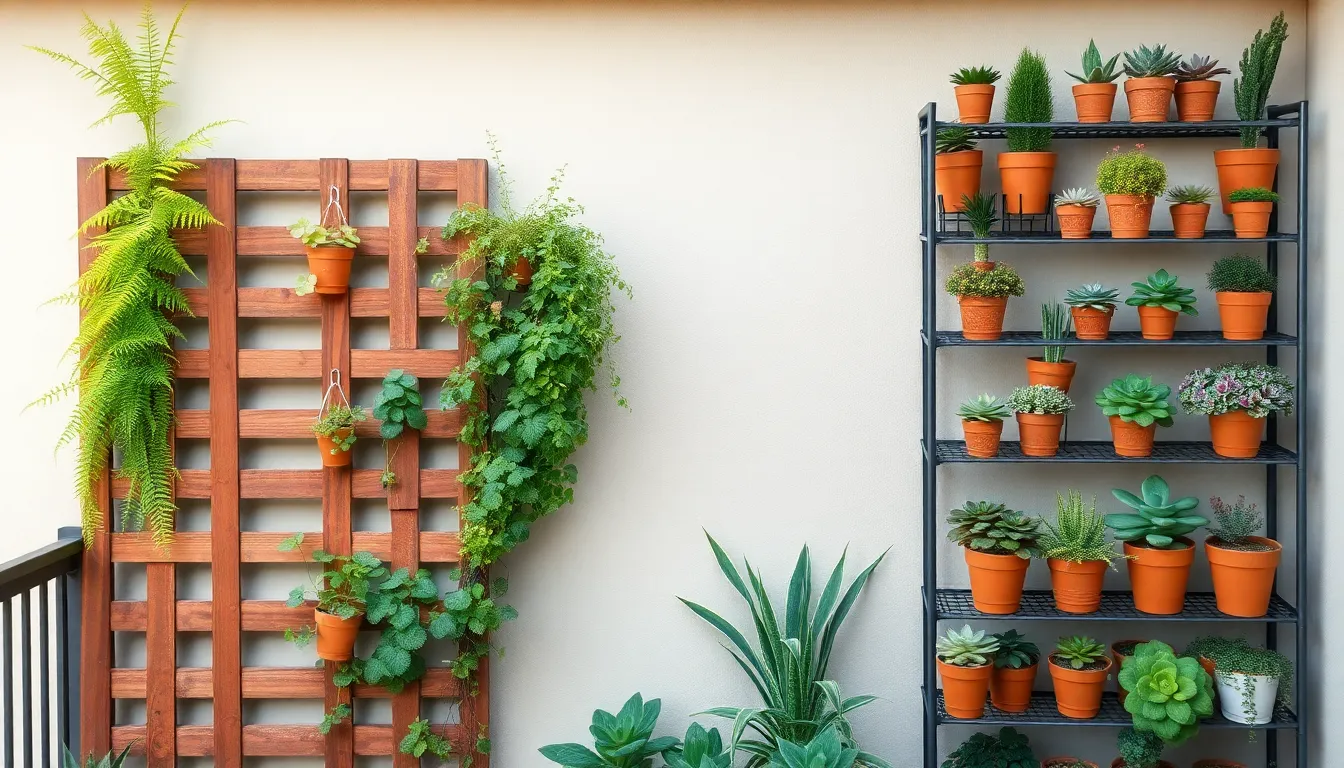In the enchanting world of gardening, space is often the final frontier that both excites and challenges us. Whether you’re nurturing your very first plant or have a flourishing green sanctuary, the concept of vertical gardening offers an incredible opportunity to transform even the smallest nooks into lush, thriving landscapes. Vertical gardens are not just a solution to limited space; they are an invitation to reimagine how we interact with nature in our homes, on our balconies, and in our backyards. This creative approach to gardening makes it possible to indulge your passion for plants without being constrained by square footage.
For the uninitiated and seasoned gardeners alike, the allure of vertical gardening lies in its versatility and innovation. From simple hanging pots to sophisticated living walls, this gardening style offers a multitude of ways to elevate your green thumb skills and add a unique dimension to your plant collection. Our article, “13 Vertical Garden Inspirations,” will guide you through a rich array of ideas that cater to all levels of expertise and ambition. Each inspiration is carefully curated to spark your creativity and provide practical solutions that can be tailored to your specific environment and aesthetic desires.
In exploring these inspirations, you’ll discover how to maximize your growing potential and bring a touch of greenery to unexpected places. We’ll delve into the benefits of vertical gardens, such as improved air quality and enhanced visual appeal, all while offering sustainable practices that can be easily adapted to your lifestyle. Whether your goal is to create a stunning focal point or to cultivate an urban oasis, these vertical gardening ideas will empower you to make the most of your space. Let’s embark on this delightful journey together and unlock the endless possibilities that vertical gardening brings to your world.
Choosing Vertical Garden Structures

When selecting vertical garden structures, consider the available space and the types of plants you wish to grow. Trellises, wall planters, and hanging gardens offer diverse options to fit your design aesthetic and gardening goals.
Materials such as wood, metal, and plastic each have unique benefits and drawbacks. Wooden structures offer a natural look but may require more maintenance, while metal is durable and often more weather-resistant.
Ensure your chosen structure provides adequate support for the plants you intend to grow. For example, heavy fruit-bearing plants like tomatoes need sturdy supports, whereas lighter herbs might thrive in hanging planters.
Beginners should start with easy-to-grow plants like herbs or lettuces, which adapt well to most vertical setups. Advanced gardeners might experiment with more challenging plants like passionfruit or cucumbers, ensuring they have the right soil mix and watering system.
Space-Saving Indoor Green Walls
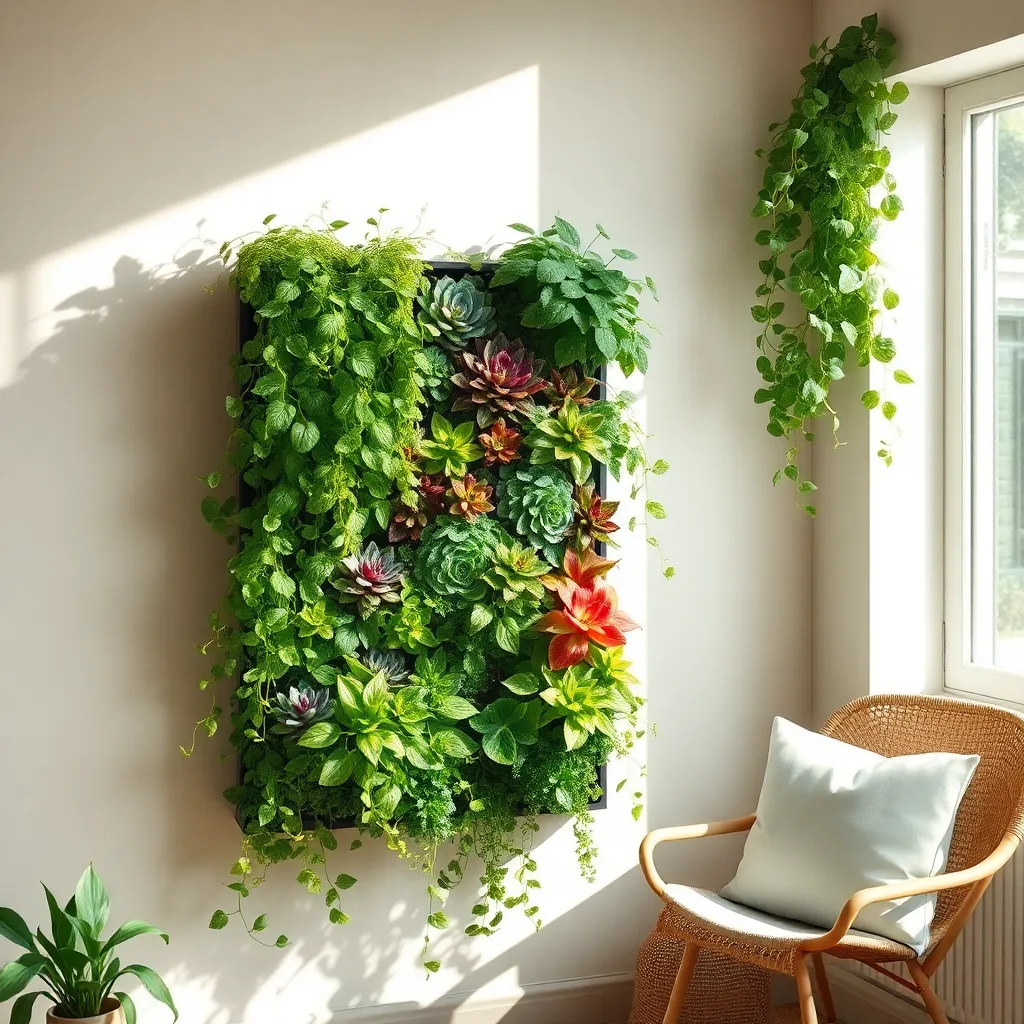
Space-saving indoor green walls are an excellent way to bring nature into your home without sacrificing floor space. They can transform any vertical surface into a lush, living tapestry, providing both aesthetic and air-purifying benefits.
Start by selecting the right plants that thrive in indoor conditions, such as pothos, ferns, or peace lilies. These plants are known for their ability to adapt to lower light levels and require minimal maintenance, making them ideal for vertical gardens.
To create a successful green wall, use a lightweight, well-draining soil mix that retains moisture without becoming soggy. Consider using a mixture of peat moss, perlite, and vermiculite to ensure optimal plant health and growth.
Watering is crucial for vertical gardens; it’s best to use a drip irrigation system or regularly mist the plants to maintain humidity. For a more advanced setup, you can install a self-watering system to ensure consistent moisture levels, especially important for busy gardeners.
Regularly check the plants for signs of pests or nutrient deficiencies, as these can quickly spread in a densely planted vertical garden. Pruning and rotating the plants periodically can help maintain even growth and prevent overcrowding.
Outdoor Vertical Garden Designs
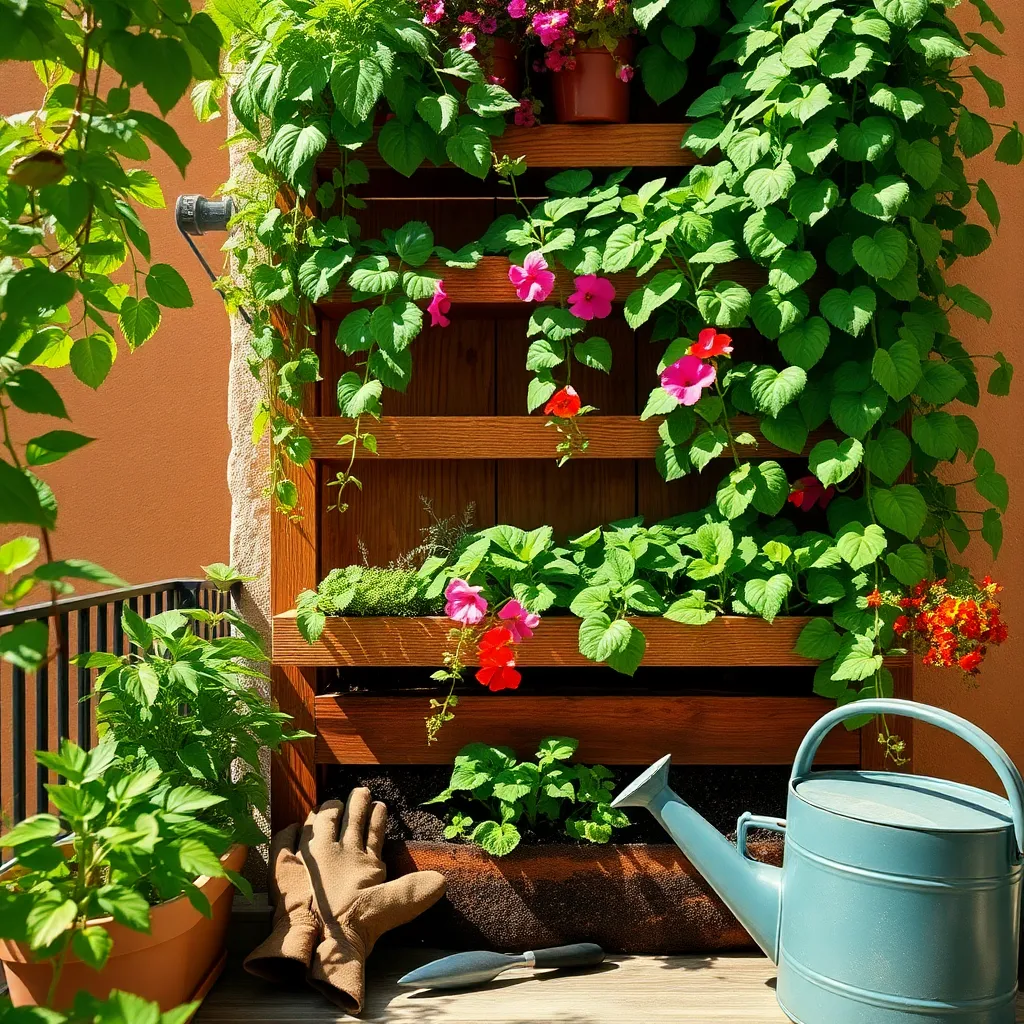
Vertical gardens outdoors can transform a bland wall into a vibrant oasis. Begin by assessing the wall’s exposure to sunlight to choose the right plants for your conditions.
For a sunny spot, consider using plants like succulents or herbs which thrive in bright light. These types of plants require well-draining soil, so opt for a mix that includes sand or perlite.
If your wall is shaded, ferns and mosses can create a lush, green facade. Ensure these plants receive consistent moisture by watering regularly, especially during dry spells.
When designing your vertical garden, start by installing a sturdy support system. Use materials like a wooden trellis or metal grids to hold your plants securely in place.
To maintain a healthy vertical garden, regular maintenance is key. Trim and prune plants as needed to encourage growth and prevent overcrowding.
For advanced gardeners, incorporating a drip irrigation system can automate watering and improve efficiency. This system ensures each plant receives the right amount of water, promoting healthy growth.
Creative Recycled Material Ideas
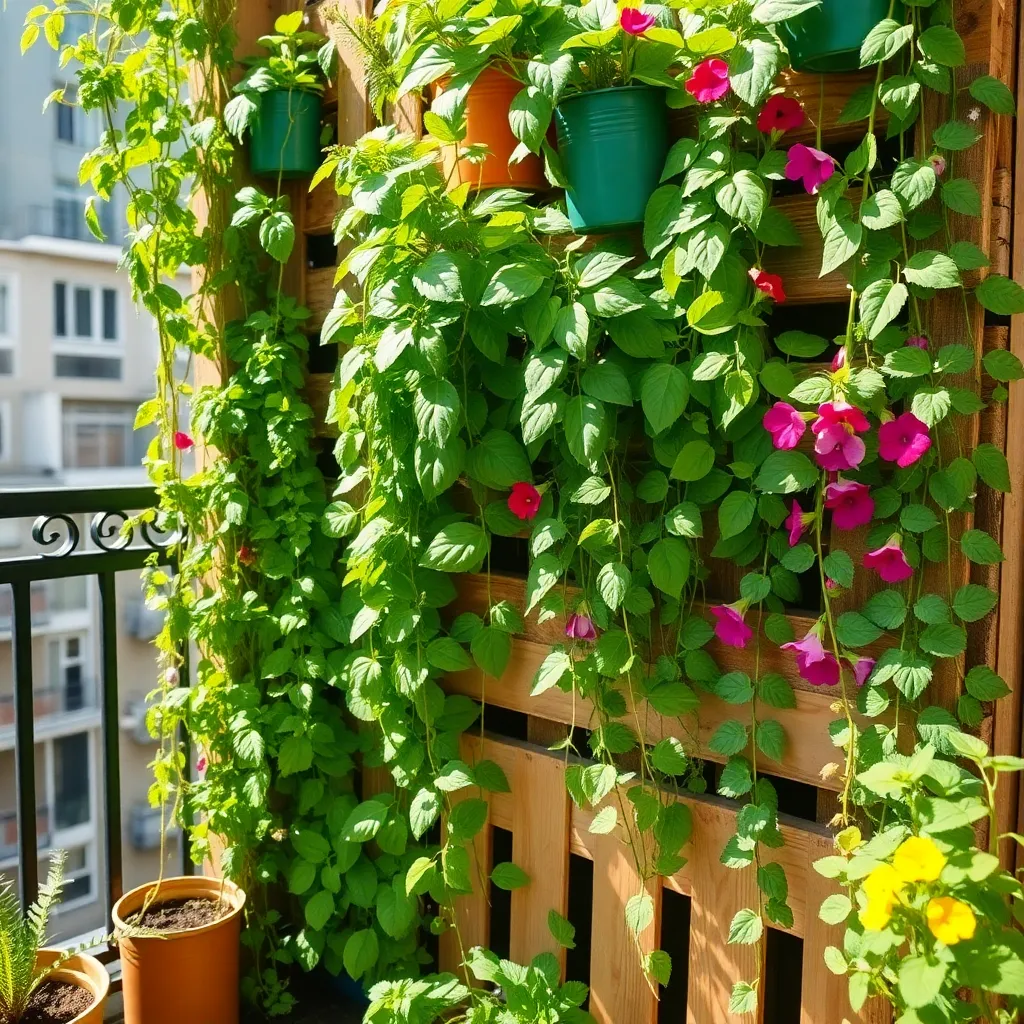
Reusing materials creatively not only saves money but also adds a unique charm to your vertical garden. Consider using old pallets to create a sturdy frame; fill the gaps with potting soil and plant shallow-rooted herbs like thyme and chives for a fragrant, edible display.
Plastic bottles can be cut and stacked to form a vertical planter that conserves space and resources. Ensure you drill small drainage holes at the bottom of each bottle to prevent waterlogging, and use a lightweight, well-draining potting mix to support a healthy root system.
For a rustic touch, repurpose wooden crates by attaching them to a wall or fence. Line them with landscape fabric to retain soil, and plant cascading flowers such as petunias or nasturtiums, which thrive in full sun and bring a splash of color to your garden.
Advanced gardeners might enjoy transforming an old ladder into a multi-tiered garden by placing pots on each step. Opt for pots with good drainage and fill them with a mix of ferns and succulents, which require minimal watering and prefer indirect light, making them perfect for shaded areas.
Hydroponic Vertical Gardening Basics
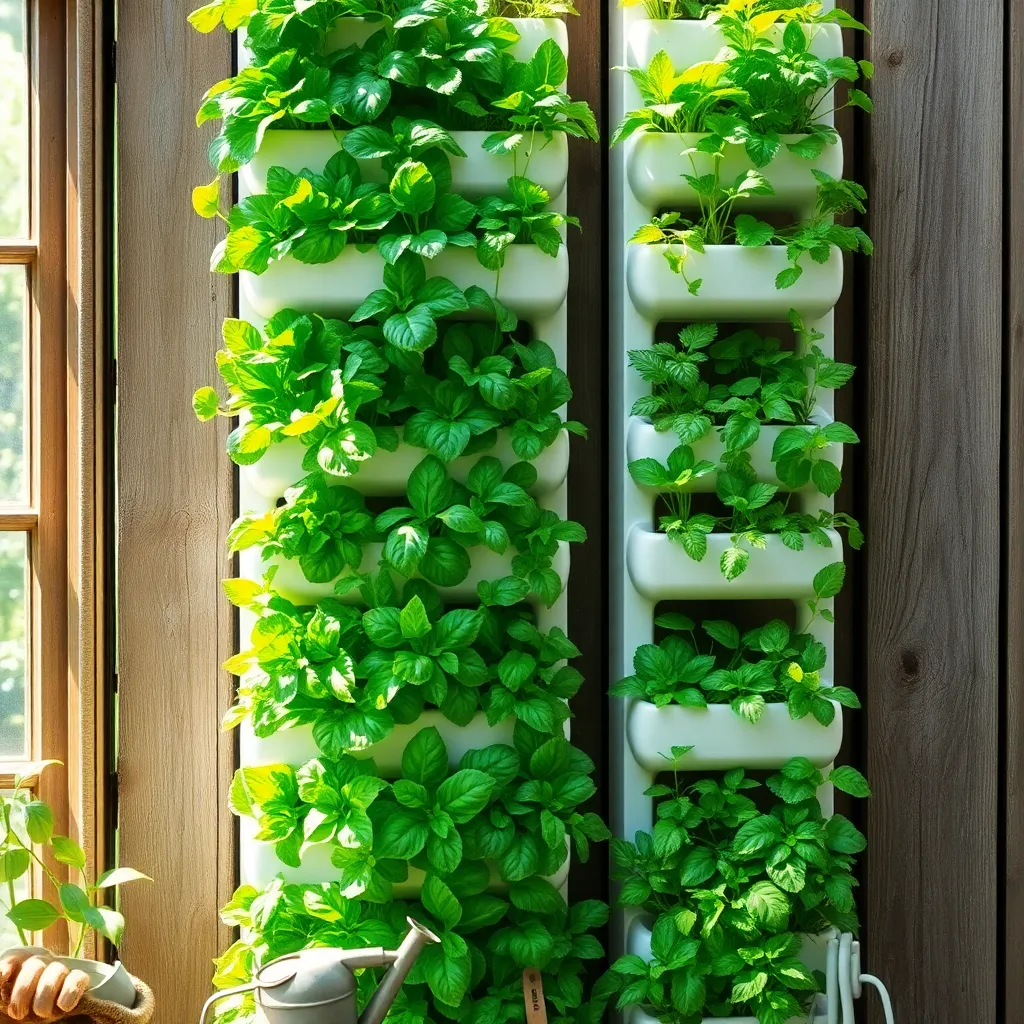
Hydroponic vertical gardening is a space-saving technique that allows you to grow plants in nutrient-rich water instead of soil. This method not only conserves water but also accelerates plant growth, making it ideal for urban gardeners with limited space.
To start, choose a suitable vertical structure that can support the weight of your plants and the hydroponic system. Consider using a simple tower garden system, which is easy to set up and maintain, especially for beginners.
Select plants that thrive in hydroponic systems, such as lettuce, spinach, and herbs like basil and mint. These plants are well-suited to a vertical setup because they have smaller root systems and grow quickly.
Ensure the nutrient solution is balanced and replenished regularly to keep your plants healthy. Use a high-quality hydroponic nutrient mix and monitor the pH levels, aiming for a range between 5.5 and 6.5 for optimal growth.
For more advanced gardeners, integrate a timer system to automate the watering schedule, ensuring consistent moisture and nutrient delivery. This setup not only reduces manual labor but also enhances plant growth efficiency, allowing you to enjoy a lush, productive vertical garden with minimal effort.
Succulent Vertical Garden Creations
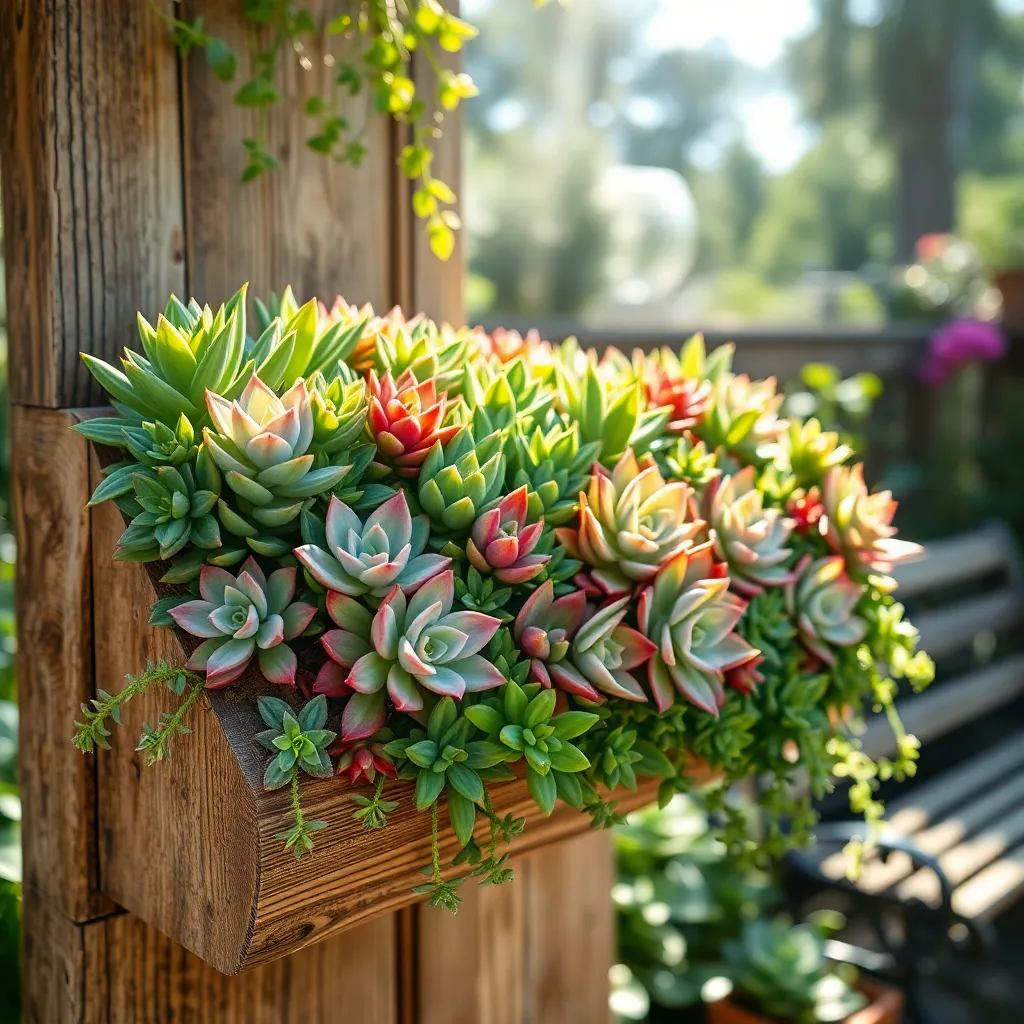
Succulent vertical gardens are a creative way to add greenery to both indoor and outdoor spaces. They are perfect for areas with limited space, as succulents require minimal soil and maintenance, making them ideal for vertical placements.
To start your succulent vertical garden, select a sturdy frame or wall planter that can support the weight of the soil and plants. Use a well-draining soil mix, such as one designed specifically for cacti and succulents, to ensure your plants thrive.
Choosing the right succulents is crucial for success. Varieties such as echeverias, sedums, and sempervivums are excellent choices due to their adaptability and resilience in vertical settings.
Watering a vertical succulent garden requires special attention since excess water can lead to root rot. Aim to water the plants only when the soil is completely dry, typically every 7 to 10 days, depending on the humidity and temperature of your environment.
For those looking to enhance their gardening skills, consider implementing a mix of colors and textures to create a visually appealing display. Regularly rotate your frame to ensure even light exposure, promoting healthy growth across all plants.
Edible Plant Vertical Gardens
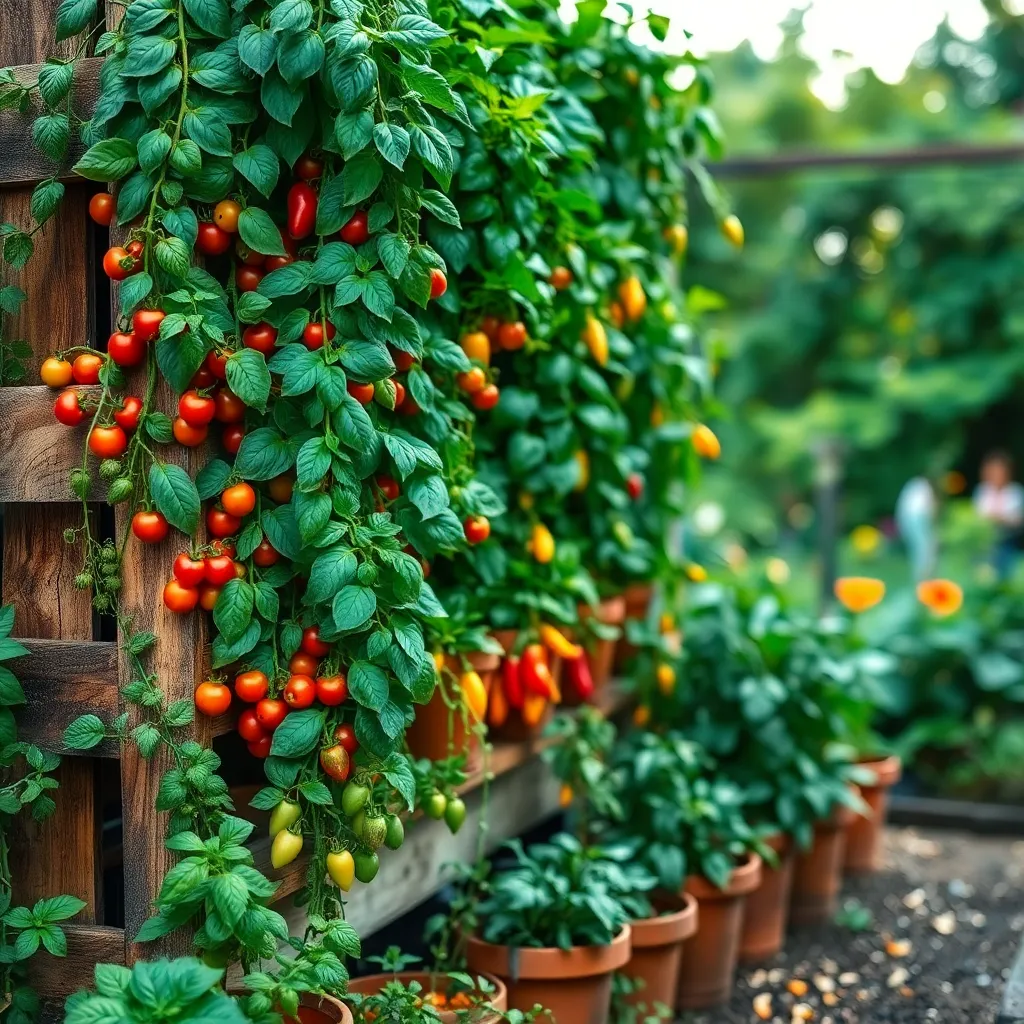
Vertical gardens offer a fantastic way to grow edible plants even in limited spaces. Beginners can start with easy-to-grow herbs like basil, mint, and parsley, which thrive in vertical setups.
Consider using a sturdy trellis or wall-mounted planter to support your plants as they grow. Ensure your vertical garden receives at least six hours of sunlight daily to keep your edible plants healthy and productive.
Using the right soil mix is crucial for success in vertical gardening. A mix of potting soil, compost, and perlite will provide the necessary nutrients and drainage for your plants.
Watering is key to maintaining a healthy vertical garden, especially since these setups can dry out quickly. Water your plants thoroughly when the top inch of soil feels dry, but be cautious not to overwater, as this can lead to root rot.
Advanced gardeners might explore growing vining crops like tomatoes or beans vertically. These plants need sturdy supports and regular pruning to encourage upward growth and maximize yield.
For an even more diverse edible garden, try integrating leafy greens such as spinach or kale, which are both nutritious and compact. Harvesting regularly will promote new growth and ensure a continuous supply of fresh produce.
Low-Maintenance Plant Selections
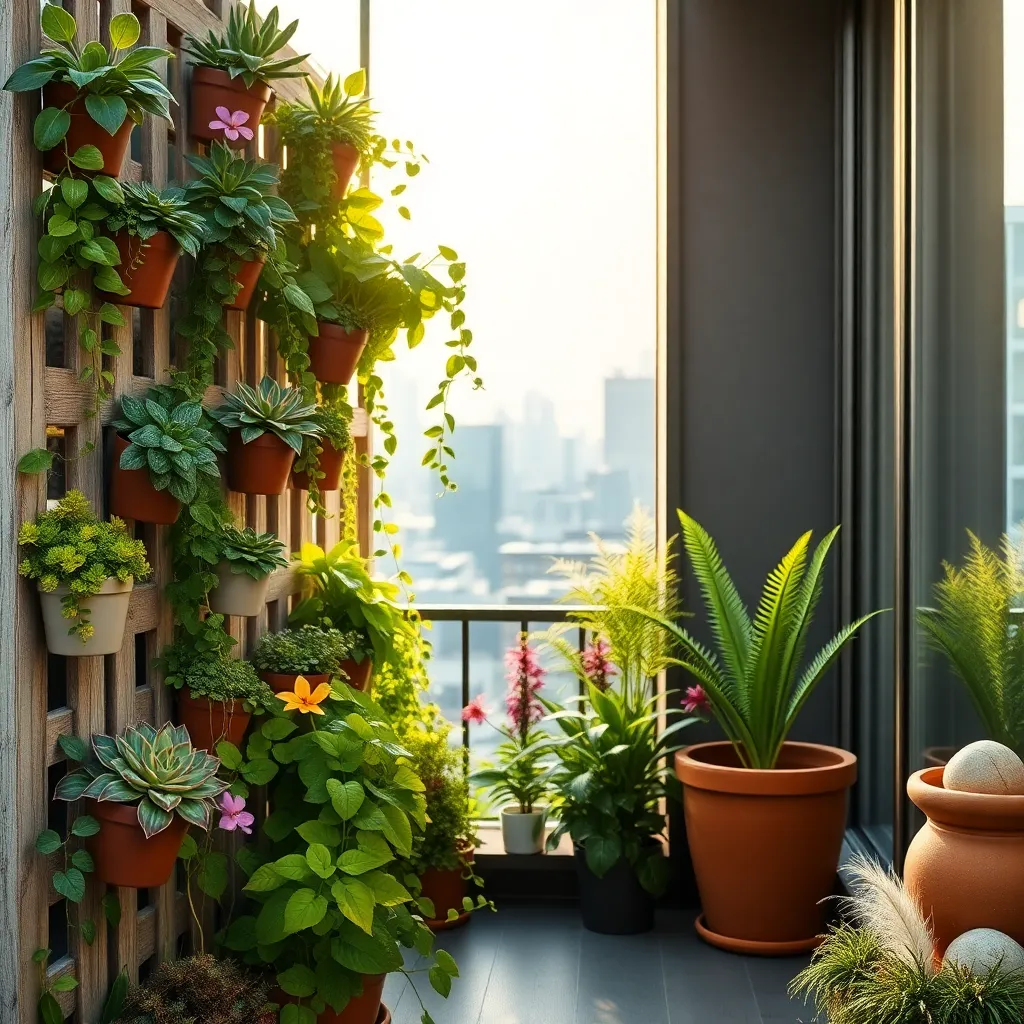
For those looking to incorporate low-maintenance plants into their vertical gardens, consider starting with succulents. These resilient plants thrive in well-draining soil and require minimal watering, making them perfect for busy gardeners.
Another excellent choice is the hardy pothos, known for its air-purifying properties and ability to adapt to various light conditions. Simply ensure the soil remains moist but not soggy, and you’ll enjoy lush greenery with minimal effort.
For a splash of color, try incorporating ferns, which add texture and vibrancy to vertical spaces. They prefer indirect light and consistently moist soil, making them ideal for shaded areas.
Experienced gardeners might appreciate the addition of spider plants, which are not only forgiving but also propagate easily. With occasional watering and bright, indirect light, they can flourish and even produce offspring for further propagation.
Irrigation Solutions for Vertical Gardens
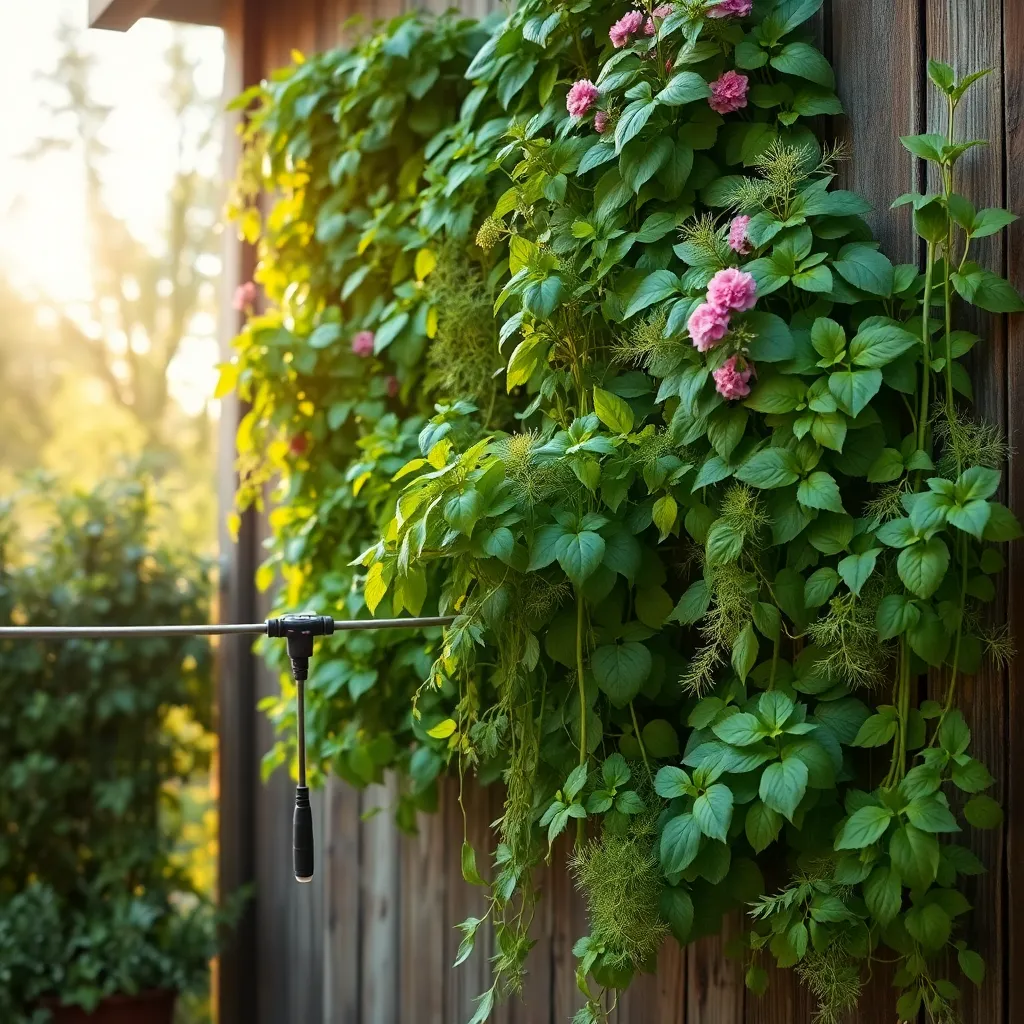
Finding the right irrigation solution for your vertical garden can greatly enhance plant growth and reduce maintenance. A popular choice is the use of drip irrigation systems, which deliver water directly to the roots, conserving water and targeting moisture where it’s needed most.
For those new to vertical gardening, starting with a gravity-fed drip system is simple and effective. This system uses gravity to help water flow through a network of tubes, providing consistent moisture without the need for pumps or electricity.
Advanced gardeners might consider integrating automatic timers with their drip systems for precise watering schedules. This ensures your plants receive the right amount of water even when you’re away, helping to maintain a healthy vertical garden with minimal effort.
Using a capillary mat is another innovative approach, particularly for smaller vertical setups. These mats draw water upward through capillary action, maintaining consistent soil moisture and reducing the risk of overwatering.
Lighting Tips for Vertical Success
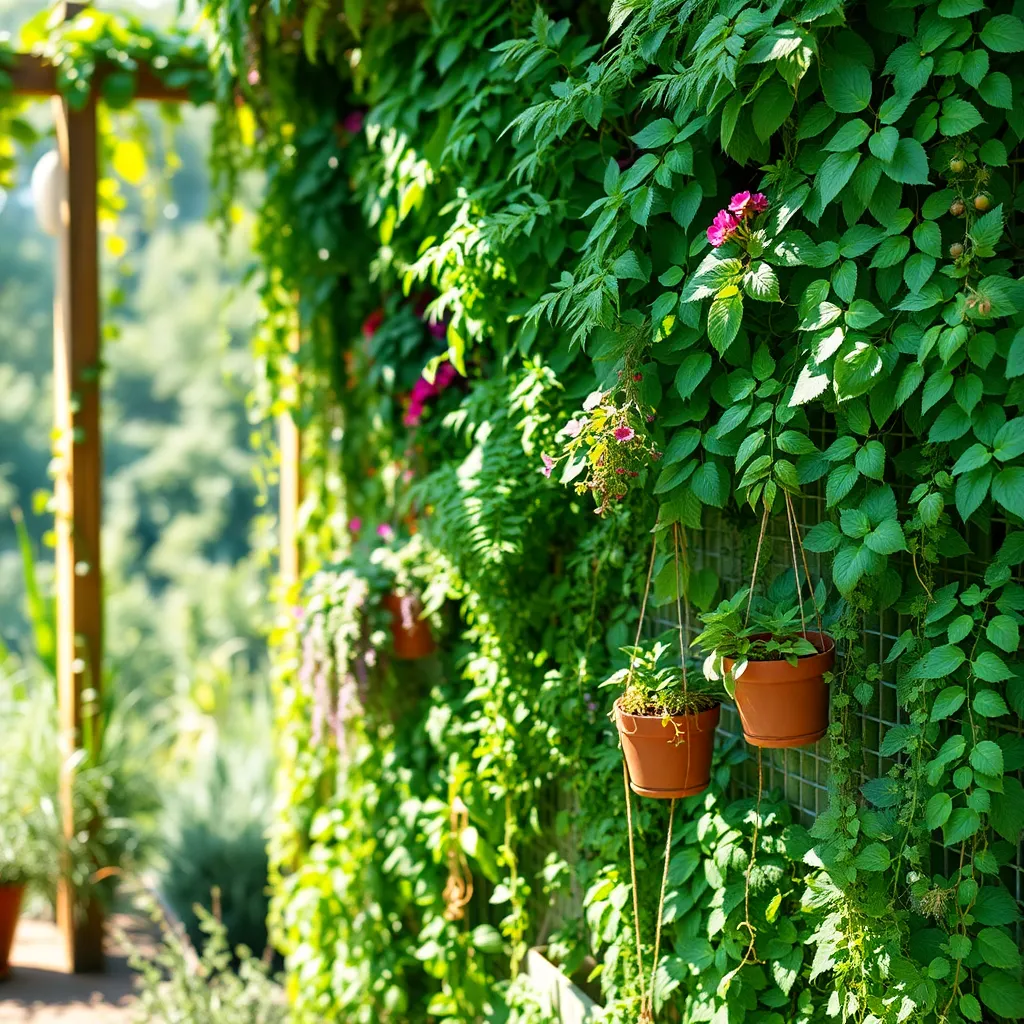
Vertical gardens present unique challenges when it comes to lighting. Ensuring your plants receive adequate light is crucial for their growth and health, especially since vertical setups can create shaded areas.
Consider the orientation of your vertical garden to maximize sunlight exposure. South-facing walls generally receive the most light, making them ideal for sun-loving plants like herbs and succulents.
For indoor vertical gardens, supplementing natural light with grow lights can be highly beneficial. LED grow lights are energy-efficient and can be adjusted in intensity and spectrum to suit different plant needs.
It’s important to regularly assess your garden’s light levels throughout the year. Seasonal changes can affect the amount of sunlight your garden receives, necessitating adjustments to your lighting plan.
Advanced gardeners can experiment with light reflectors to enhance natural light. Reflective surfaces, such as mirrors or white walls, can help distribute light evenly across the garden, ensuring all plants receive adequate exposure.
DIY Vertical Garden Projects
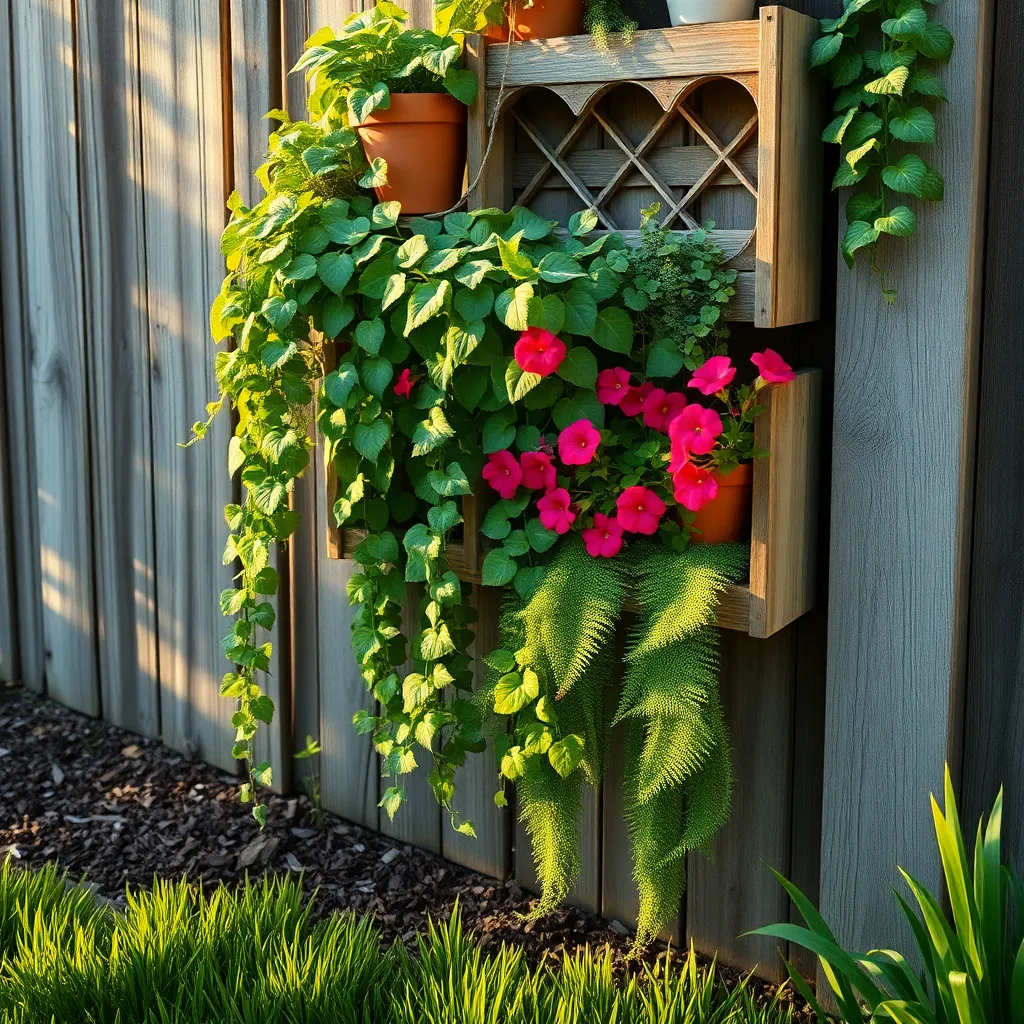
Creating a vertical garden is a fantastic way to maximize your gardening space, especially in urban environments. Start by choosing a sturdy wall or fence as your base, ensuring it can support the weight of soil and plants. Use materials like wooden pallets, old ladders, or metal grids to construct a framework for your garden. Each of these options provides a unique aesthetic and can be customized to fit your space and style.
For beginners, consider starting with lightweight materials such as fabric pockets or plastic containers. These are easy to install and can be moved around to find the perfect light conditions for your plants. Ensure proper drainage by adding small holes to the bottom of containers to prevent water from accumulating and causing root rot. Hanging planters or tiered plant stands can also be a simple yet effective way to start your vertical garden adventure.
When selecting plants, consider those that naturally grow vertically, such as climbing vines or trailing varieties. Herbs like thyme, mint, and basil thrive in vertical gardens and are perfect for beginners due to their resilience and low maintenance. For more advanced gardeners, try incorporating flowering vines like clematis or morning glories, which offer vibrant colors and can grow rapidly with the right support.
Soil choice is crucial in a vertical setup to ensure plants receive the nutrients they need. Use a lightweight, well-draining potting mix enriched with compost or slow-release fertilizer. Watering can be a challenge in vertical gardens, so consider installing a drip irrigation system to provide consistent moisture without overwatering. Alternatively, hand-watering with a long-spouted watering can is effective, especially in smaller setups.
Seasonal Care and Maintenance
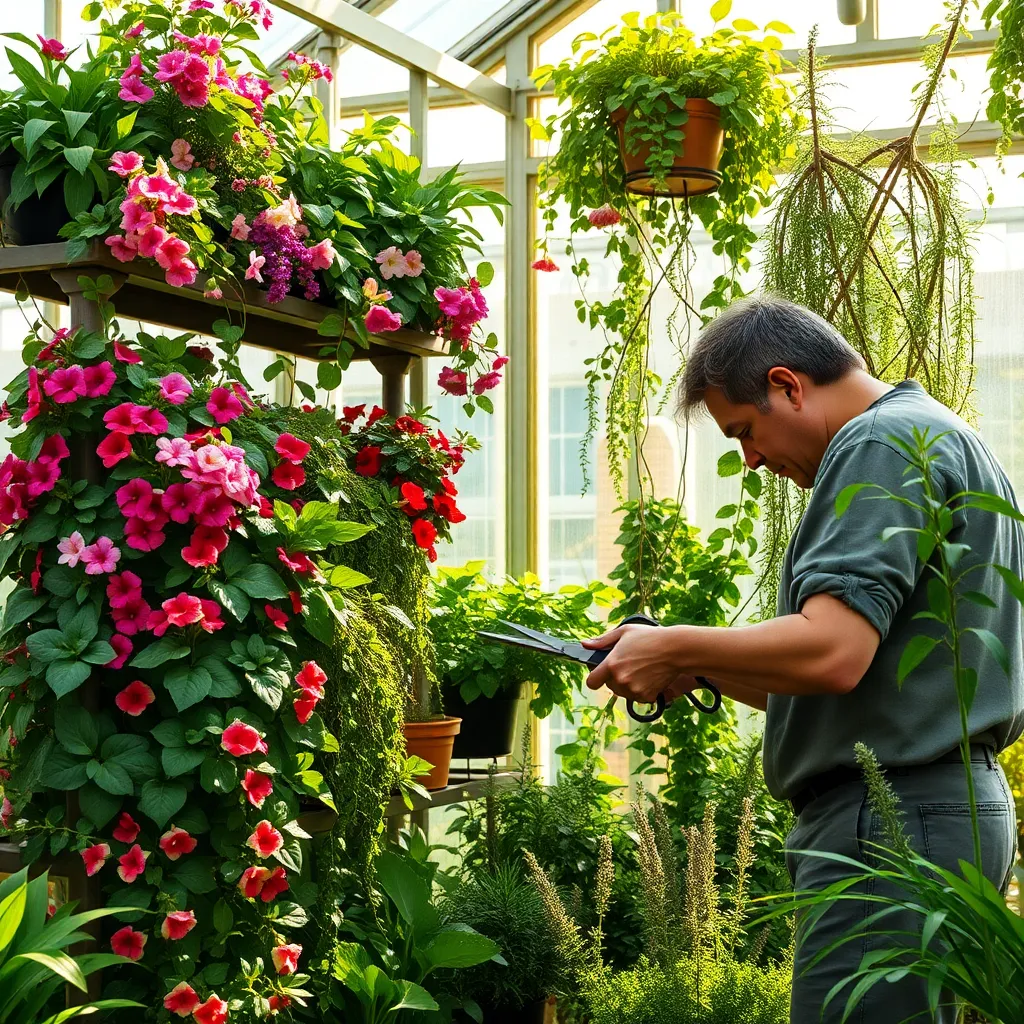
As the seasons change, so do the needs of your vertical garden. In the spring, focus on soil enrichment by adding a layer of compost or organic matter to boost nutrient content. Regularly check soil moisture levels to ensure plants are neither too dry nor waterlogged, especially in summer when evaporation rates increase.
During summer, watering becomes crucial due to higher temperatures. Consider installing a drip irrigation system to deliver consistent moisture directly to the roots, minimizing water waste. Mulching is another effective tactic; it helps retain soil moisture and suppresses weed growth, ensuring your plants stay healthy.
In autumn, pruning is essential to remove dead or diseased foliage. This practice not only keeps plants healthy but also encourages new growth. Clean and store any removable vertical structures before winter to prevent weather damage and extend their lifespan.
Winter is a time to focus on protecting your vertical garden from harsh conditions. If your garden includes tender perennials, use frost cloths or row covers to shield them from extreme cold. Inspect plant ties and supports regularly to ensure they remain secure despite winter winds and snow.
Inspiring Vertical Garden Transformations
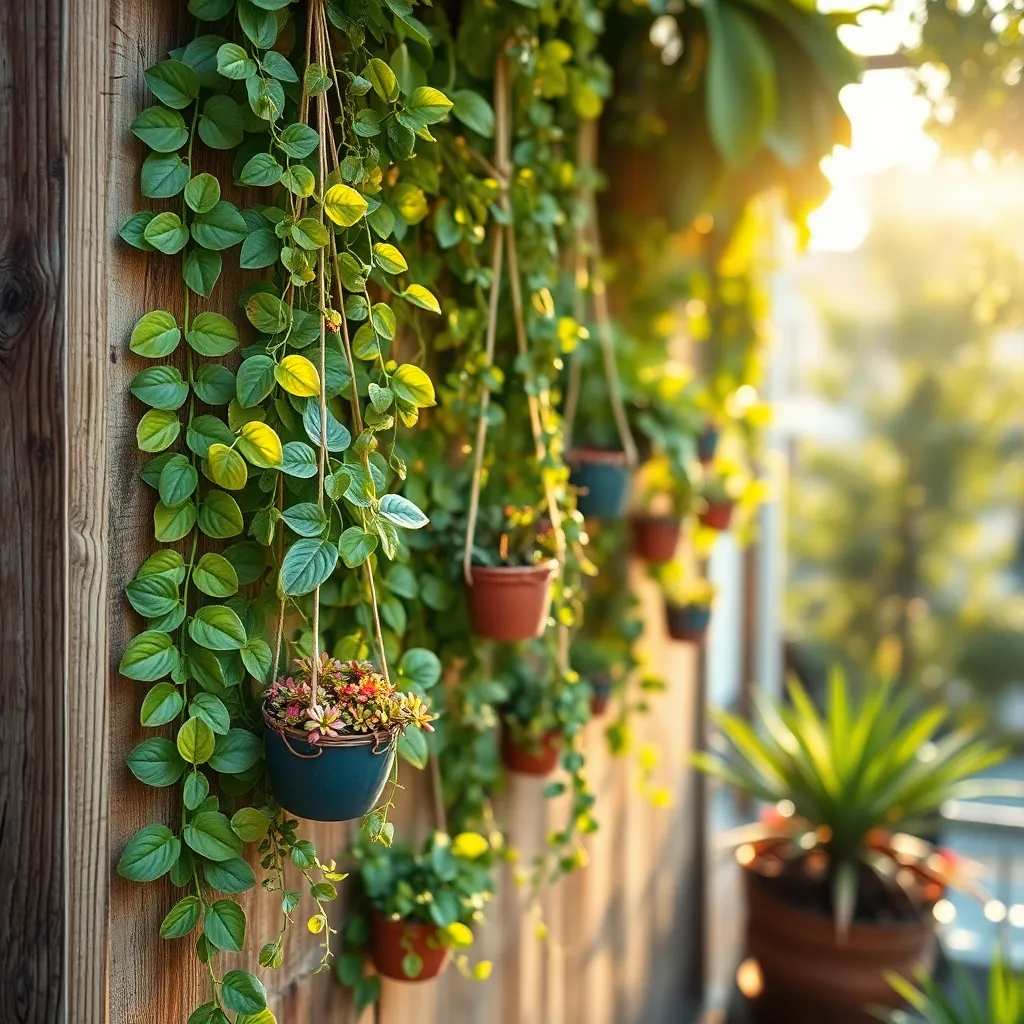
Vertical gardens offer a unique way to maximize space and enhance visual appeal, making them perfect for both small balconies and large backyard installations. For beginners, start by selecting hardy plants like ferns and pothos, which thrive in vertical settings with minimal care.
Creating a lush vertical garden involves understanding the specific needs of your chosen plants. Ensure you select the right soil mix—well-draining soils are a must for vertical planters to prevent root rot and encourage healthy growth.
Watering techniques can dramatically impact the success of your vertical garden. Use a drip irrigation system to maintain consistent moisture levels, which is especially beneficial for larger installations that are difficult to reach.
For more advanced gardeners, consider incorporating a variety of plant species to create a dynamic and textured display. Utilize trailing plants like ivy alongside flowering varieties such as petunias to add both color and depth to your vertical garden.
Maintenance is key in keeping your vertical garden thriving year-round. Regularly trim and prune plants to promote new growth and prevent overcrowding, ensuring that each plant receives adequate light and nutrients.
Experimenting with different types of vertical structures can inspire creativity and innovation in your garden design. Whether using a simple trellis or a sophisticated hydroponic wall, choose a system that complements your space and meets the needs of your specific plant selections.
Conclusion: Growing Success with These Plants
In exploring the ’13 Vertical Garden Inspirations,’ we discovered key relationship concepts that mirror the art of nurturing flourishing gardens. From the foundation of trust and open communication, akin to rich, fertile soil, to the vitality of shared experiences reminiscent of intertwining vines, each principle plays a vital role in sustaining and enriching partnerships. We delved into the importance of personal growth, which parallels the upward expansion of a thriving vertical garden, and embraced the beauty of diversity, much like the variety of plants that bring color and life to your space.
Now, take the next step in your relationship journey by choosing one concept to focus on this week—perhaps enhancing communication or dedicating time to shared hobbies. These small, deliberate actions can cultivate deeper connections and understanding.
As you continue to nurture your relationship garden, remember to bookmark this article as a handy reference guide. By doing so, you equip yourself with invaluable insights for continued growth and harmony. With commitment and care, your relationship will not only thrive but blossom into a vibrant and enduring partnership. Here’s to sowing the seeds of lasting love and watching them flourish!

